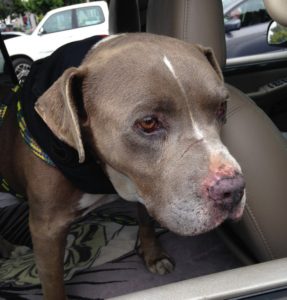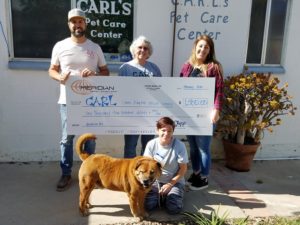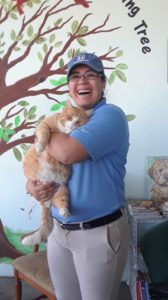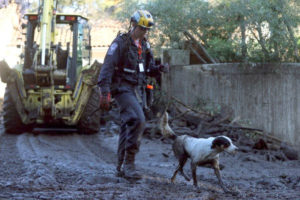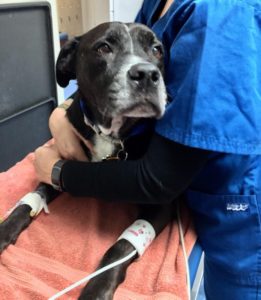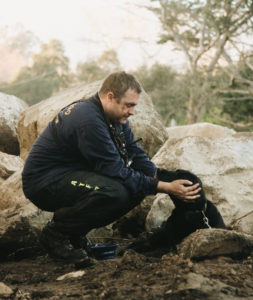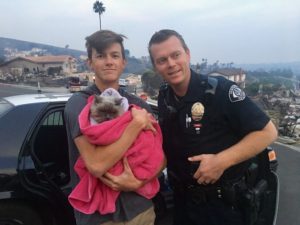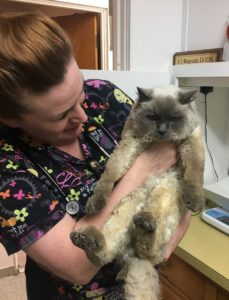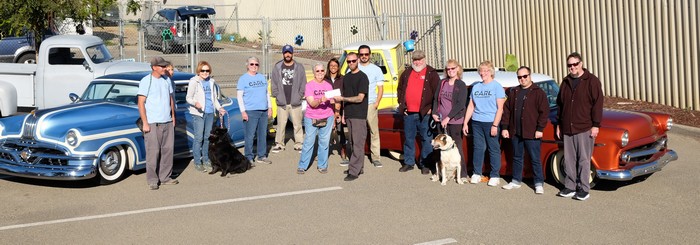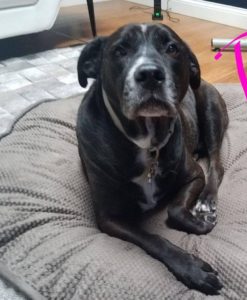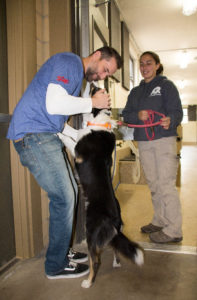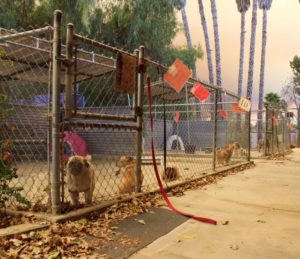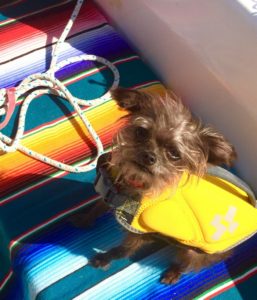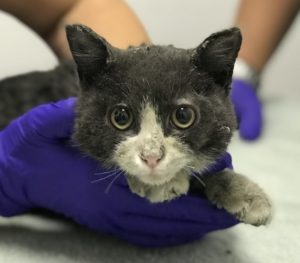
 • A message of hope for the families of Thomas Fire cats
• A message of hope for the families of Thomas Fire cats
Surfcat Rescue and Adoptions urges residents to keep looking for their missing cats
The story is heartbreakingly common. During the harrowing first hours of the Thomas Fire, with just minutes to evacuate, many residents were unable to locate and/or catch their cats. They were forced to leave them behind in order to escape the flames that quickly engulfed the hillsides and hundreds of homes. In the days that followed, devastated families searched the charred remains of their neighborhoods and scoured the web pages of local animal rescues in the desperate hope that their cat had somehow survived. When these efforts failed, they grieved, believing their beloved pets had perished in the flames.
But Leslie Weiss, founder of Surfcat Rescue and Adoptions, is reaching out with a message of hope to anyone whose cat is still missing. “We’ve learned valuable lessons from fire cat rescue teams up in Northern California,” explains Weiss. “Even months after the Tubbs Fire, cats that had long since been presumed dead were being trapped and returned to their families! The old cliché that cats have nine lives really isn’t very far from the truth. Given the opportunity, cats will survive. They’ll escape, they’ll hide, and they’ll hunker down and shelter in place until it’s safe to come out. We’re not giving up, and neither should you.”
In the immediate aftermath of the fire, learning from the successes of other rescues faced with similar challenges, Surfcat purchased motion sensor/infrared wildlife cameras, secured donations of plastic storage boxes, food and water bowls, and went to work. Putting the word out on social media, Surfcat made connections with people who were looking for their lost kitties in both the burn areas and in evacuation areas. Setting up “critter cam/feeding stations” and employing expert trappers, Surfcat began identifying, rescuing, and reuniting kitties with their families. These rescues felt like miracles and the reunions gave people who had lost everything new hope for the future.
Surfcat is still in rescue-recover-reunite mode, and has compiled a comprehensive database of cats still missing due to the Thomas Fire. If you lost a cat in the burns areas or in evacuation areas you can register them with Surfcat Rescues and Adoption. Go to www.surfcatcafe.org/thomas-fire/ to register your missing cat or call 500-7125.
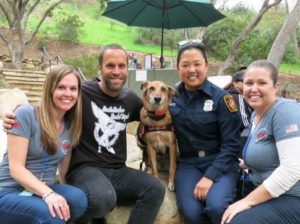
• The night of December 4, 2017, will forever be remembered at the National Disaster Search Dog Foundation as the night that they narrowly escaped disaster at the National Training Center (NTC), when the Thomas Fire raged through the canyon. Though they evacuated all dogs and staff in plenty of time and the main buildings were spared, they did sustain over $2.5 million in damages to Search City, the Train Wreck prop, the historic Boone’s Cabin, and landscape and maintenance equipment throughout the campus. It will take a great deal of time and effort to restore the NTC to its original state.
Just a month after the fire, 18 SDF-trained Search Teams responded to the devastating Montecito mudslides to help search for survivors amidst the debris. The grueling week-long deployment tested the resilience of search and rescue community and proved that inter-agency teamwork and focused determination is a critical part of a strong and reliable emergency response network when the unthinkable occurs.
They are dedicated like never before to rebuilding the NTC and continuing to provide these amazing Search Teams with the essential skills necessary to maintain top deployment readiness.
Disasters will happen, and it’s our job to be ready when they do. To learn more, and to donate to the Foundation visit https://searchdogfoundation.org/.

• Canine Adoption and Rescue League (C.A.R.L.) seeks participants, visitors, and of course, dog lovers of all ages for its much-anticipated 21st Annual Pooch Parade! This unique event will be held from 8 a.m. to 4 p.m. on Saturday, May 5 at Ventura Beach Promenade Park.
In addition to the parade, there will be races, pet-related vendors and displays, food, live music, beer and wine, demos, a silent auction and fun contests and 5k and10k races.
Registration forms, and fees are available online at poochparade.org. T-shirts will be given to the first 250 entrants.
A Silent Auction featuring hundreds of special items will be held on-site. Proceeds will help pay for supplies and medical care for dogs and puppies in C.A.R.L.’s Second Chance Program.
C.A.R.L is a non-profit, Ventura County-based organization almost entirely run by volunteers. For more information, email [email protected] or visit poochparade.org or carldogs.org.
Beloved pet and companion of Raul Acosta. “Trouble” was 13 years old and a proud member of the Buddy Nation family. “Trouble” loved his walks on the beach and he is at rest there now. He is sorely missed by Raul, Cappi, Patti, Gill, Danny, Betty, Debi, Regina, Janet, Stephanie, Copper, Orange, Charlie, Jack, Alice and his Harbor Boulevard friends.
